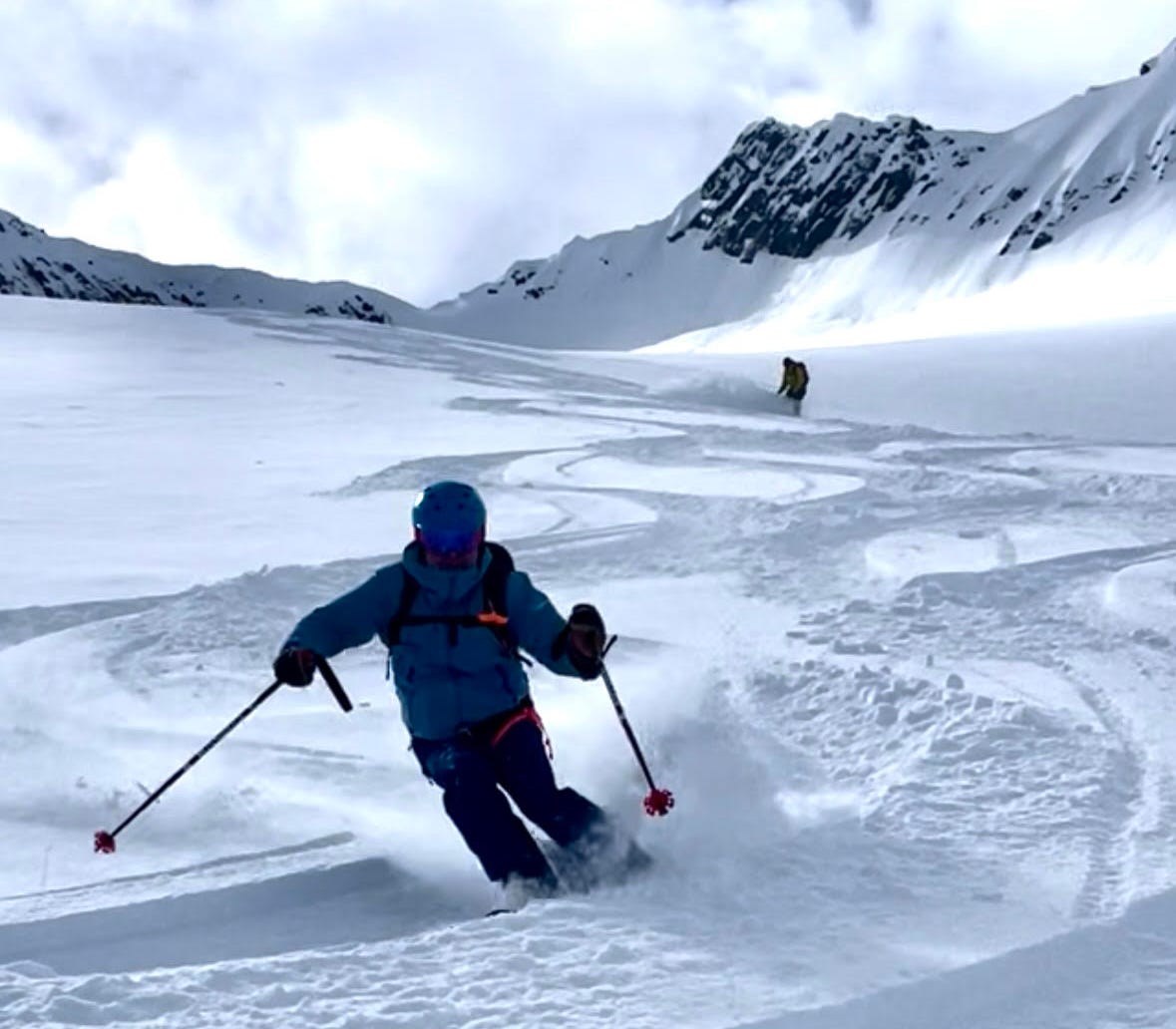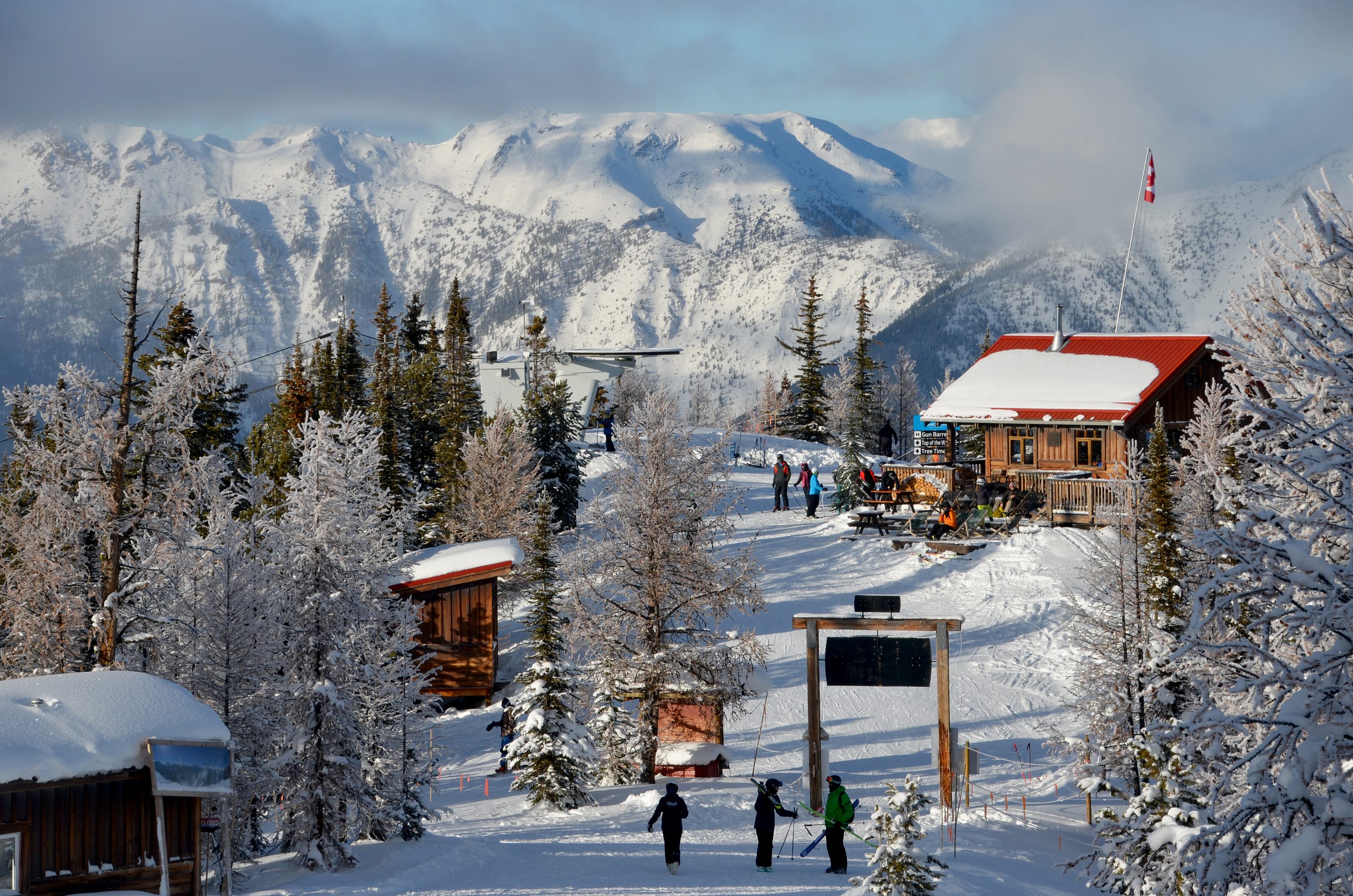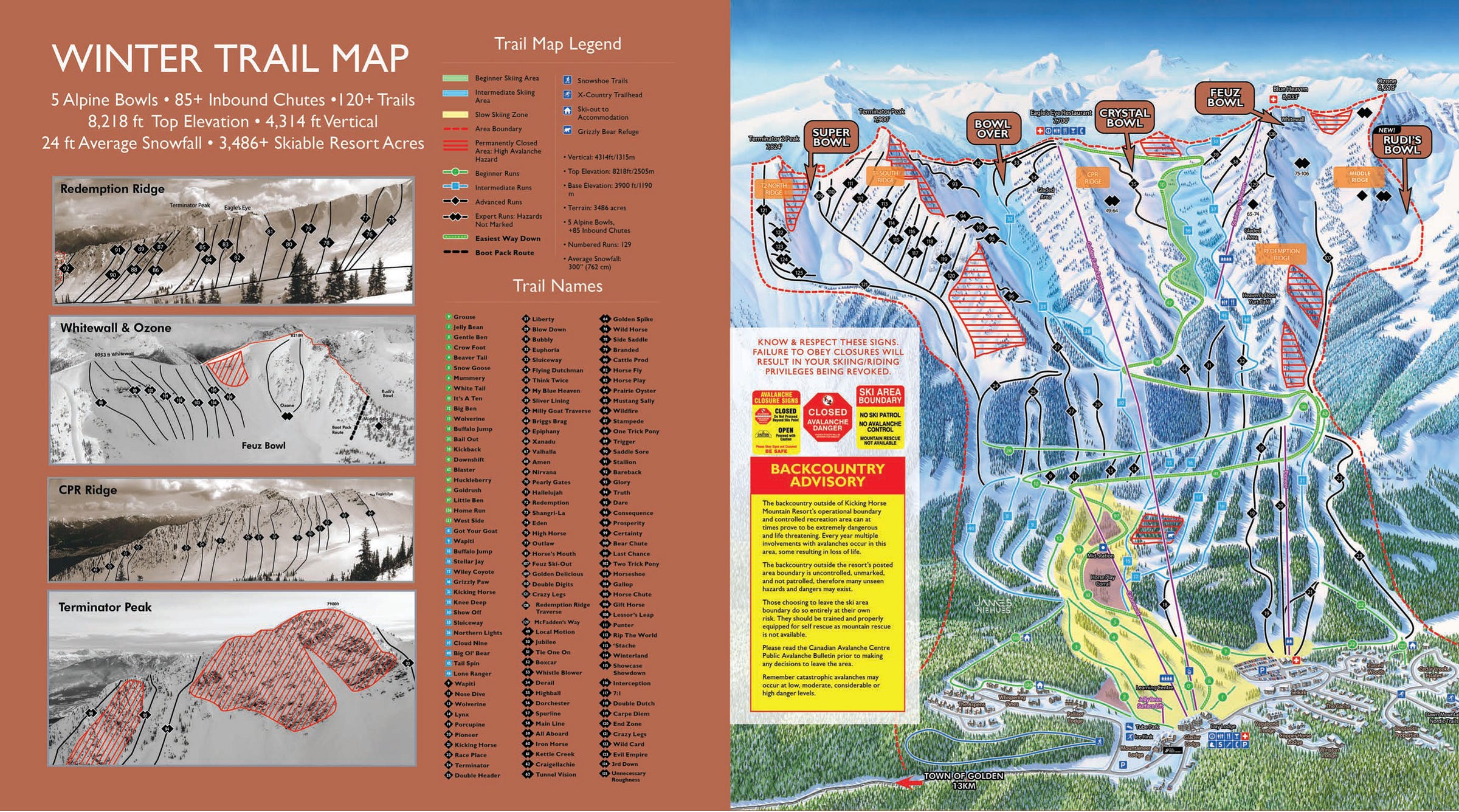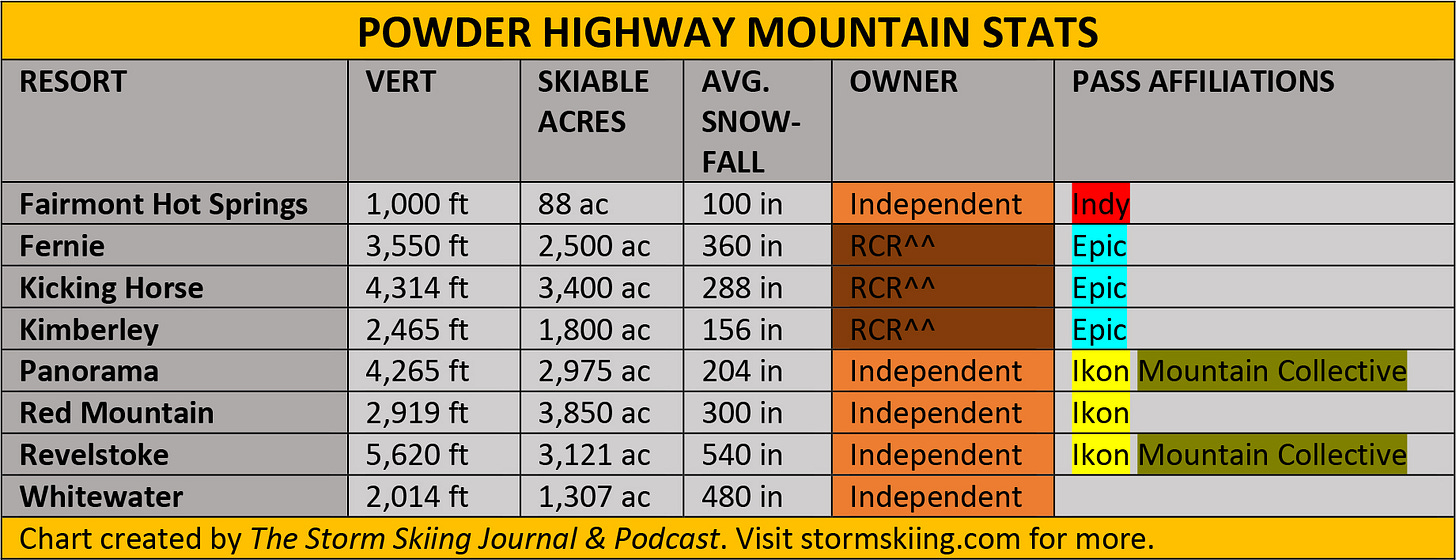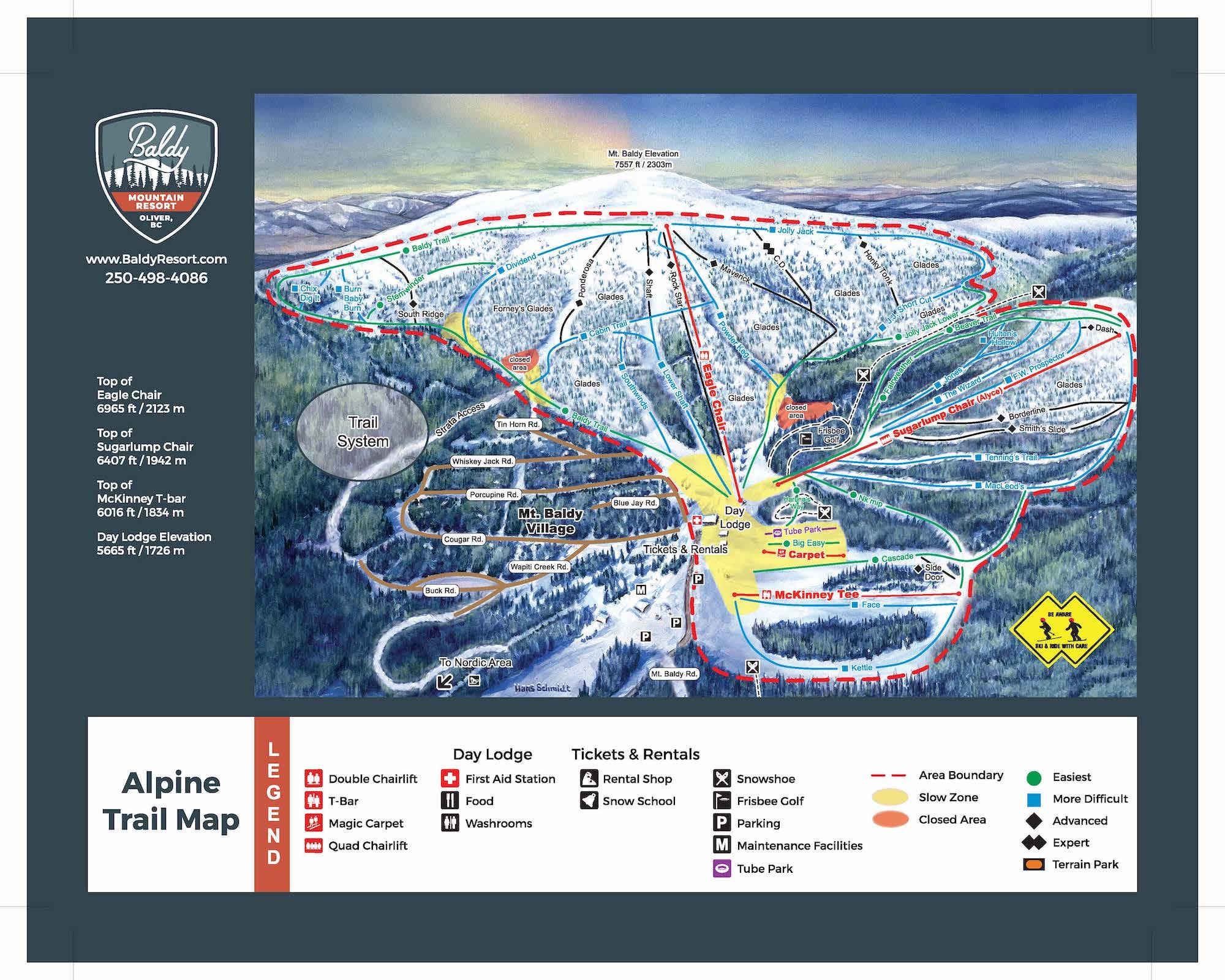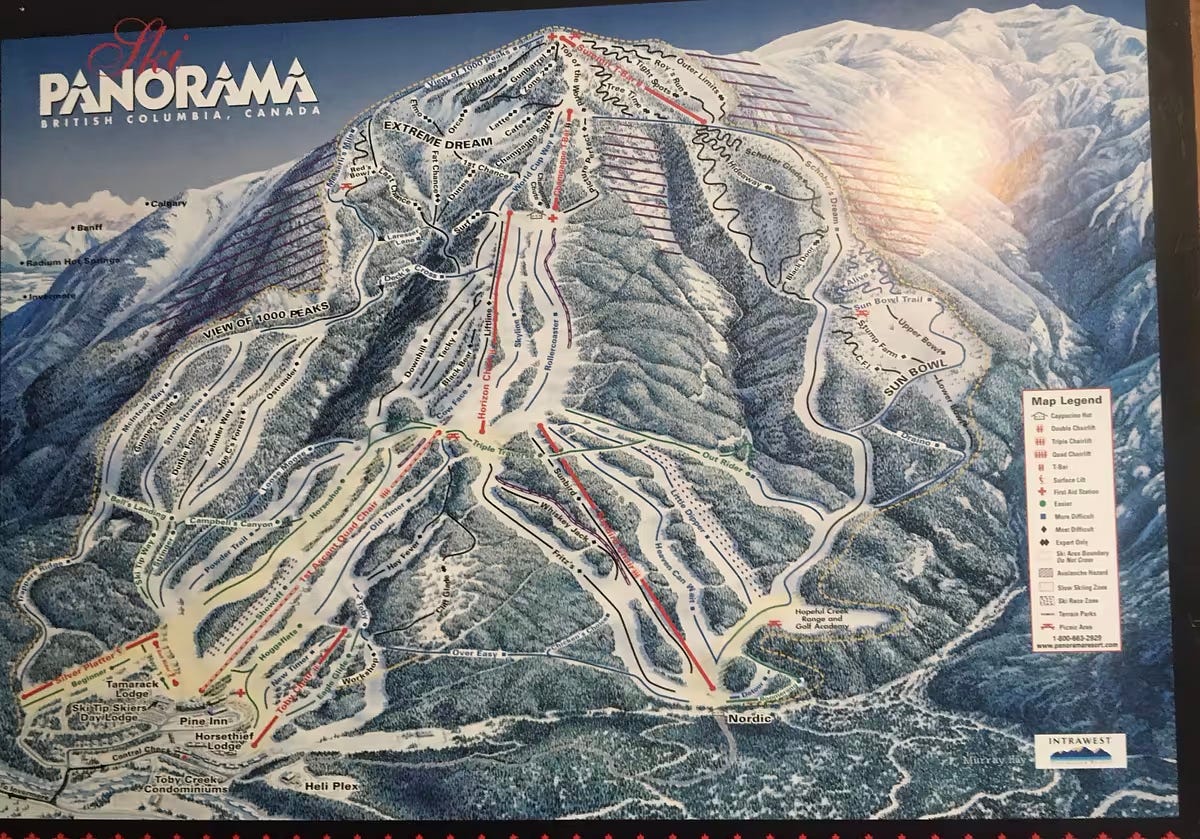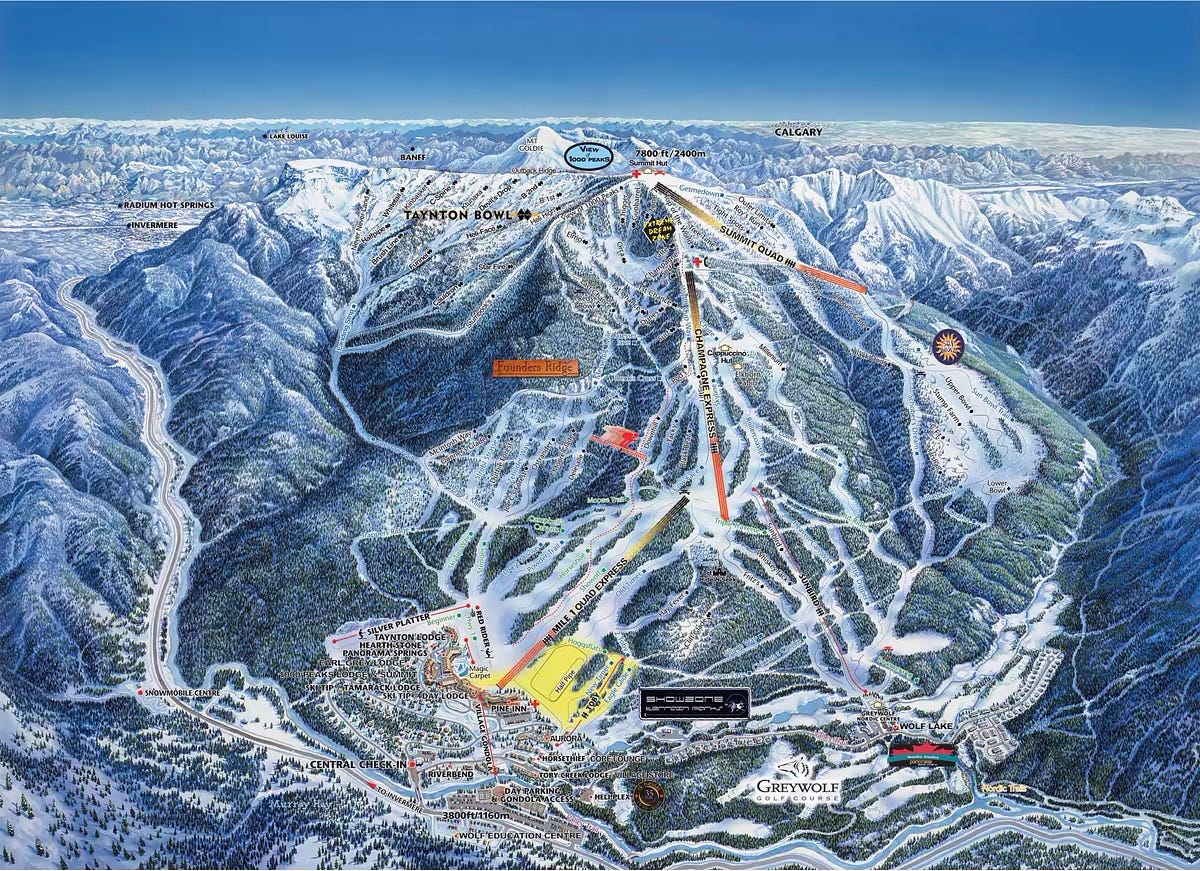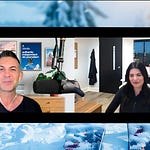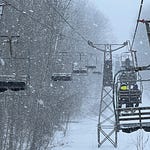Who
Steve Paccagnan, President and CEO of Panorama Mountain, British Columbia
Recorded on
March 27, 2024
About Panorama
Click here for a mountain stats overview
Owned by: Panorama Mountain Village, Inc., a group of local investors
Located in: Panorama, British Columbia, Canada
Year founded: 1962
Pass affiliations:
Ikon Pass: 7 days, no blackouts
Ikon Base Pass: 5 days, holiday blackouts
Mountain Collective: 2 days, no blackouts
Lake Louise Pass: view details here
Closest neighboring ski areas: Fairmont Hot Springs (:45), Kimberley (1:43), Kicking Horse (1:54) – travel times will vary considerably depending upon road conditions and time of year
Base elevation: 3,773 feet/1,150 meters
Summit elevation: 8,038 feet/2,450 meters
Vertical drop: 4,265 feet/1,300 meters
Skiable Acres: 2,975
Average annual snowfall: 204 inches/520 centimeters
Trail count: 135 (30% expert, 20% advanced, 35% intermediate, 15% beginner)
Lift count: 10 (1 eight-passenger pulse gondola, 2 high-speed quads, 2 fixed-grip quads, 1 triple, 1 double, 1 platter, 2 carpets – view Lift Blog’s inventory of Panorama’s lift fleet)
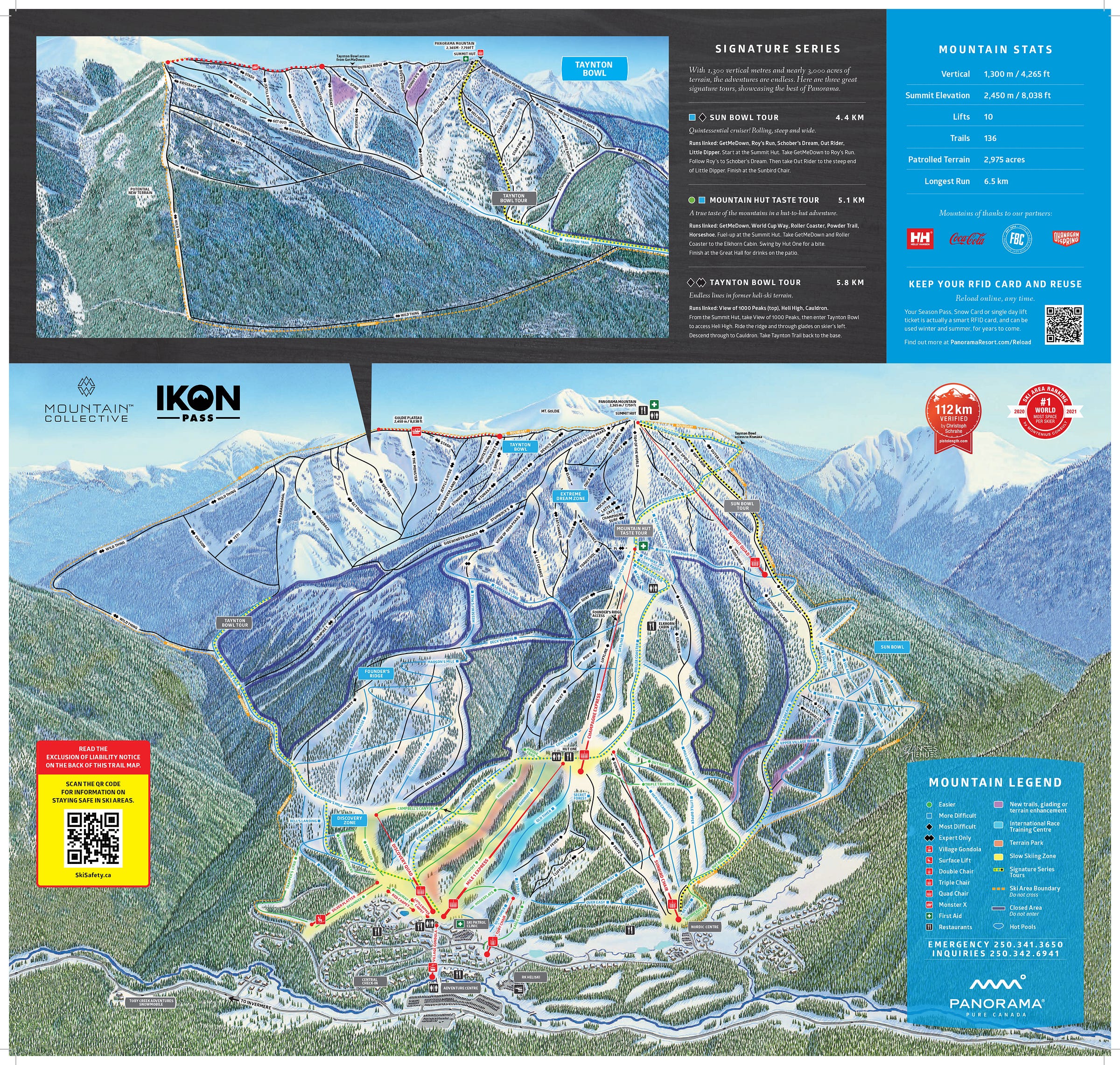
Why I interviewed him
U.S. America is making a mistake. In skiing, as in so many other arenas, we prioritize status quo protectionism over measured, holistic development that would reorient our built environments around humans, rather than cars, shrinking our overall impact while easing our access to the mountains and permitting more people to enjoy them. Our cluttered and interminable western approach roads, our mountain-town housing shortages, our liftlines backed up to Kansas are all the result of deliberate generational decisions to prioritize cars over transit, open space over dense walkable communities, and blanket wilderness protection over metered development of new public ski areas in regions where the established businesses - and their surrounding infrastructure - are overwhelmed.
I write about these things a lot. This pisses some of you off. I’m OK with that. I’m not here to recycle the broken ideas that have made U.S. skiing into the mess that (in some fundamental ways, in certain regions) it is. I’m here to figure out how it can be better. The skiing itself, mind you, tends to be fabulous. It is everything that surrounds the mountains that can spoil the experience: the cost, the hassle, the sprawl. There are better ways to do this, to get people to the mountains and to house them there, both to live and to vacation. We know this because other countries already do a lot of the things that we ought to be doing. And the most culturally similar and geographically cozy one is so close we can touch it.
U.S. America and U.S. Americans are ceding North American skiing’s future to British Columbia. This is where virtually all of the continent’s major resort development has occurred over the past three decades. Why do you suppose so many skiers from Washington State spend so much time at Whistler? Yes, it’s the largest resort in North America, with knockout terrain and lots of snow. But Crystal and Stevens Pass and Baker all get plenty of snow and are large enough to give most skiers just about anything they need. What Whistler has that none of them do is an expansive pedestrian base village with an almost infinite number of ski-in, ski-out beds and places to eat, drink, and shop. A dense community in the mountains. That’s worth driving four or more hours north for, even if you have to deal with the pain-in-the-ass border slowdowns to get there.
This is not an accident, and Whistler is not an outlier. Over the past 30-plus years, the province of British Columbia has deliberately shaped its regulatory environment and developmental policies to encourage and lubricate ski resort evolution and growth. While all-new ski resort developments often stall, one small ski area after another has grown from community bump to major resort over the past several decades. Tiny Mount Mackenzie became titanic Revelstoke, which towers over even mighty Whistler. Backwater Whitetooth blew upward and outward into sprawling, ferocious Kicking Horse. Little Tod Mountain evolved into Sun Peaks, now the second-largest ski area in Canada. While the resort has retained its name over the decades, the transformation of Panorama has been just as thorough and dramatic.
Meanwhile, in America, we stagnate. Every proposed terrain expansion or transit alternative or housing development crashes headfirst into a shredder of bureaucratic holdups, lawsuits, and citizen campaigns. There are too many ways to stop things, and too many people whose narrow visions of what the world ought to be blockade the sort of wholesale rethinking of community architecture that would make the mountains more livable and accessible.
This has worked for a while. It’s still sort of working now. But each year, as the same two companies sell more and more passes to access a relatively stable number of U.S. ski areas, the traffic, liftlines, and cost of visiting these large resorts grows. Locals will find a way, pick their spots. But destination skiers with a menu of big-mountain options will eventually realize that I-70 is not a mandatory obstacle to maneuver on a good ski vacation. They can head north, instead, with the same ski pass they already have, and spend a week at Red or Fernie or Kimberley or Revelstoke or Sun Peaks or Kicking Horse.
Or Panorama. Three thousand acres, 4,265 vertical feet, no lines, and no hassle getting there other than summoning the patience to endure long drives down Canadian two-laners. As the U.S. blunders along, Canada kept moving. The story of Panorama shows us how.
What we talked about
A snowmaking blitz; what happened when Panorama joined the Ikon Pass; how Covid savaged the international skier game; Panorama in the ‘80s; Intrawest arrives; a summit lift at last; village-building; reviving Mt. Baldy, B.C.; Mont Ste. Marie and learning French; why Intrawest sold the ski area; modernizing the lift system; busy busy Copper; leaving for Kicking Horse; Resorts of the Canadian Rockies arrives; who owns Panorama; whether the resort will stay independent; potential lift replacements and terrain expansions; could we ever see a lift in Taynton Bowl?; explaining those big sections of the trailmap that are blocked off with purple borders; and whitebark pine conservation.
Why I thought that now was a good time for this interview
It wouldn’t be fair to call Panorama a Powder Highway sleeper. The place seems to be doing fine as a business, with plenty of skier traffic to support continuous expansive infrastructure upgrades. But with lower average annual snowfall totals than Revy and Whitewater and Fernie and Red, Panorama does tend to get fewer shout-outs through the media and social media megaphones. It’s Northstar to Palisades Tahoe, Keystone to A-Basin, Park City to the Cottonwoods: the less-snowy, less-intense neighbor that collects families in wholesome Build-A-Bear fashion.
But Panorama is wrapping up its second full season on the Ikon Pass, and its second winter since Canada finally unlocked its Covid-era borders. What impact, if any, would those two developments have on Panorama’s famously uncrowded slopes? Even if Colorad-Bro would never deign to turn his Subaru north, would Kansas Karl or North Dakota Norman load the kids into the minivan for something farther but less annoying?
Not yet, it turns out. Or at least, not in great enough numbers to wreck the place. But there is another angle to the Panorama story that intrigues me. Like Copper Mountain, Mountain Creek, and Whistler, Panorama once belonged to Intrawest. Unlike Winter Park, Steamboat, Stratton, and Snowshoe, they did not remain part of the enterprise long enough to live second lives as part of Alterra Mountain Company. But what if they had? Our big-mountain coalitions have somewhat ossified over these past half-dozen years, so that we think of ski areas as Ikon mountains or Epic mountains or Indy mountains or independent mountains. But these rosters, like the composition of sports teams or, increasingly, leagues, can fluctuate wildly over time. I do wonder how Whistler would look under Alterra and Ikon, or what impact Mountain Creek-as-unlimited-Ikon mountain would have had on the megapass market in New York City? We don’t really know. But Panorama, as a onetime Intrawest mountain that rejoined the family through the backdoor with Ikon membership, does give us a sort-of in-between case, a kind of What If? episode of skiing.
Which would be a fun thought experiment under any circumstances. But how cool to hear about the whole evolution from a guy who saw it all happen first-hand over the course of four decades? Who saw it from all levels and from all angles, who knew the players and who helped push the boulder uphill himself? That’s increasingly rare with big mountains, in this era of executive rotations and promotions, to get access to a top leader in possession of institutional knowledge that he himself helped to draft. It was, I’m happy to say, as good as I’d hoped.
What I got wrong
I said that Panorama was “one of the closest B.C. ski areas to the United States.” This is not quite right. While the ski area is just 100 or so miles from the international border, more than a dozen ski areas sit closer to the U.S., including majors such as Kimberley, Fernie, Whitewater, and Red Mountain.
Why you should ski Panorama
Let’s acknowledge, first of all, that Panorama has a few things working against it: it’s more than twice as far from Calgary airport – most skiers’ likely port of entry – than Banff and its trio of excellent ski areas; it’s the least powdery major ski resort on the Powder Highway; and while the skiable acreage and vertical drop are impressive, skiers must ride three lifts and a Snowcat to lap much of the best terrain.
But even that extra drive still gets you to the bump in under four hours on good roads – hardly an endurance test. Sure, they get more snow in Utah, but have you ever been in Utah on a powder day? Enjoy that first untracked run, because unless you’re a local who knows exactly where to go, it will probably be your only one. And lapping multiple lifts is more of a psychological exercise than a practical one when there are few to no liftlines.
And dang the views when you get there:
There are plenty of large, under-trafficked ski resorts remaining in the United States. But they tend to be hundreds of miles past the middle of nowhere, with 60-year-old chairlifts and little or no snowmaking, and nowhere to sleep other than the back of your van. In BC, you can find the best of America’s Big Empties crossed with the modern lift fleets of the sprawling conglomerate-owned pinball machines. And oh by the way you get a hell of a discount off of already low-seeming (compared to the big-mountain U.S.) prices: an American dollar, as of April 16, was worth $1.38 Canadian.
Podcast Notes
On Intrawest
Panorama, as a former Intrawest-owned resort, could easily have been part of Alterra Mountain Company right now. Instead, it was one of several ski areas sold off in the years before the legacy company stuffed its remainders into the Anti-Vail:
On Mont Ste. Marie
Mont Ste. Marie is one of approximately 45,000 ski areas in Quebec, and the only one, coincidentally, that I’ve actually skied. Paccagnan happened to be GM when I skied there, in 2002:
On Kicking Horse
It’s incredible how many U.S. Americans remain unaware of Kicking Horse, which offers what is probably the most ferocious inbounds ski terrain in North America, 4,314 vertical feet of straight down:
Well, almost straight down. The bottom bit is fairly tame. That’s because Kicking Horse, like many B.C. ski areas, began as a community bump and exploded skyward with an assist from the province. Here’s what the ski area, then known as “Whitetooth,” looked like circa 1994:
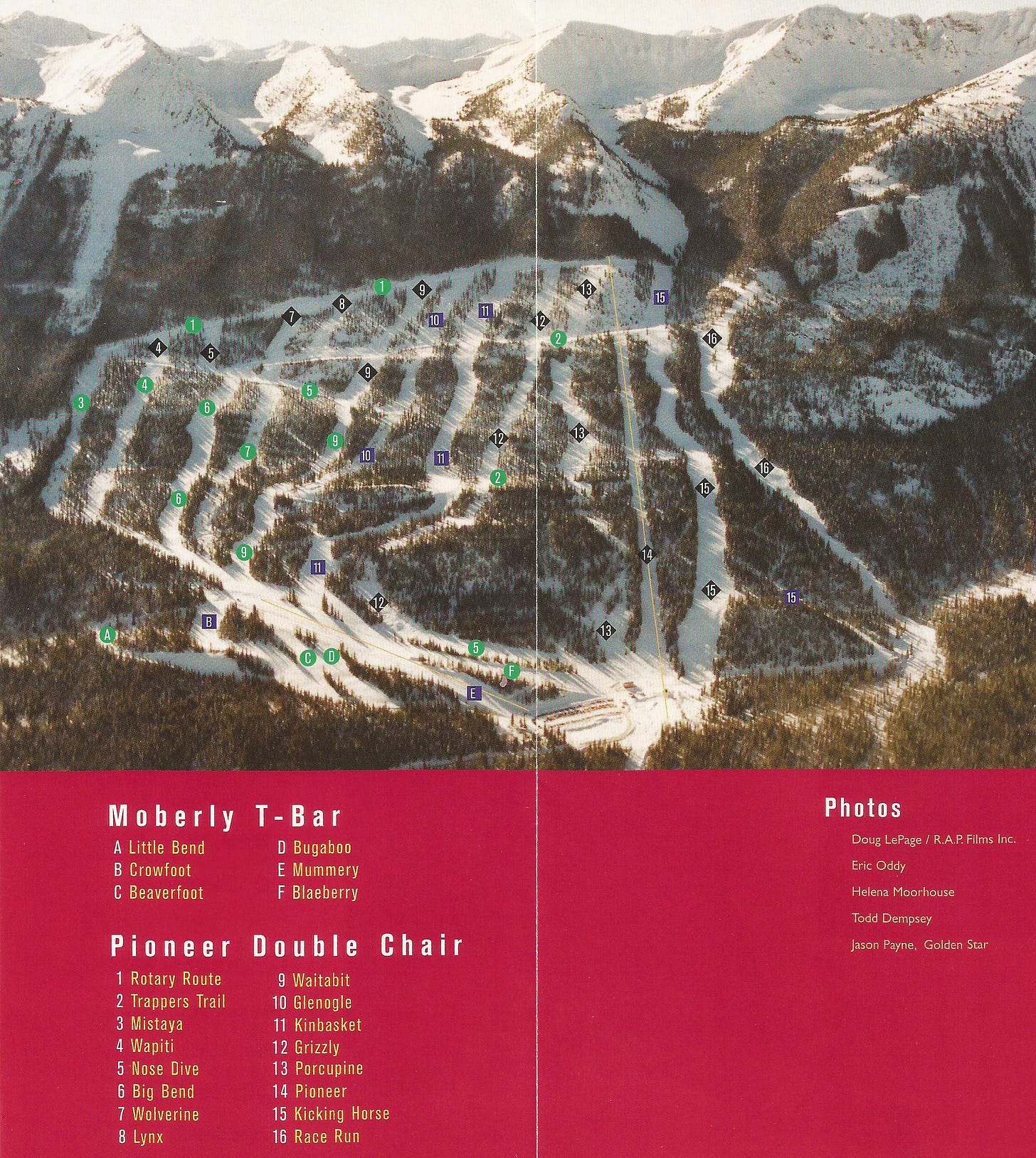
This sort of transformation happens all the time in British Columbia, and is the result of a deliberate, forward-looking development philosophy that has mostly evaporated in the U.S. American West.
On the Powder Highway
Panorama lacks the notoriety of its Powder Highway size-peers, mostly because the terrain is overall a bit milder and the volume of natural snow a bit lower than many of the other ski areas. Here’s a basic Powder Highway map:

And a statistical breakdown:
On the Lake Louise Pass
I already covered this one in my podcast with Red Mountain CEO Howard Katkov a couple months back:
Katkov mentions the “Lake Louise Pass,” which Red participates in, along with Castle Mountain and Panorama. He’s referring to the Lake Louise Plus Card, which costs $134 Canadian up front. Skiers then get their first, fourth, and seventh days free, and 20 percent off lift tickets for each additional visit. While these sorts of discount cards have been diminished by Epkon domination, versions of them still provide good value across the continent. The Colorado Gems Card, Smugglers’ Notch’s Bash Badge, and ORDA’s frequent skier cards are all solid options for skiers looking to dodge the megapass circus.
On Panorama’s masterplan:
On Mt. Baldy, B.C.
Paccagnan helped revitalize a struggling Mt. Baldy, British Columbia, in the 1990s. Here was the ski area’s 1991 footprint:
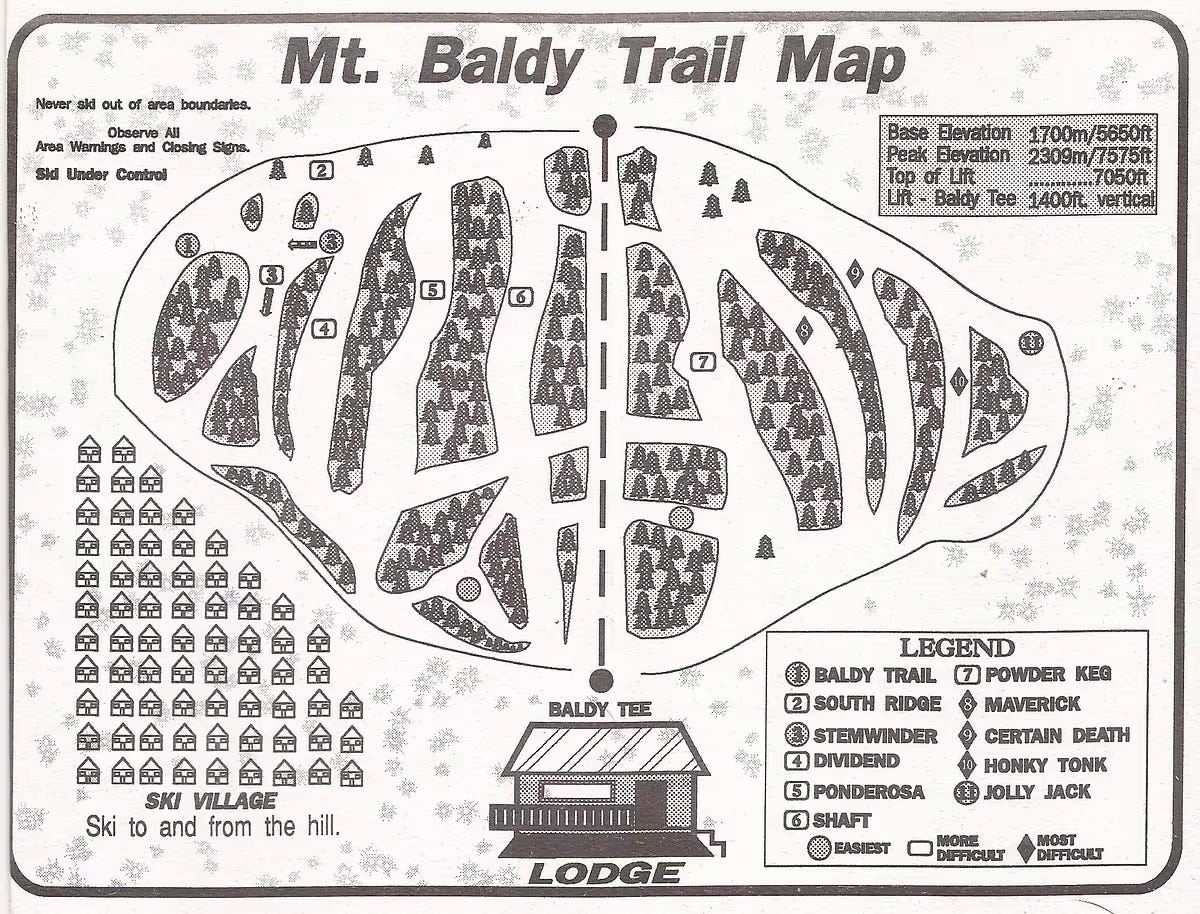
And here’s what it looks like today – the ski area joined Indy Pass for the 2023-24 ski season:
On Panorama’s evolution
Panorama, like many B.C. ski areas, has evolved significantly over the past several decades. Here’s what the place looked like in 1990, not long after Paccagnan started and before Intrawest bought the place. A true summit lift was still theoretical, Taynton Bowl remained out of bounds, and the upper-mountain lifts were a mix of double chairs and T-bars:
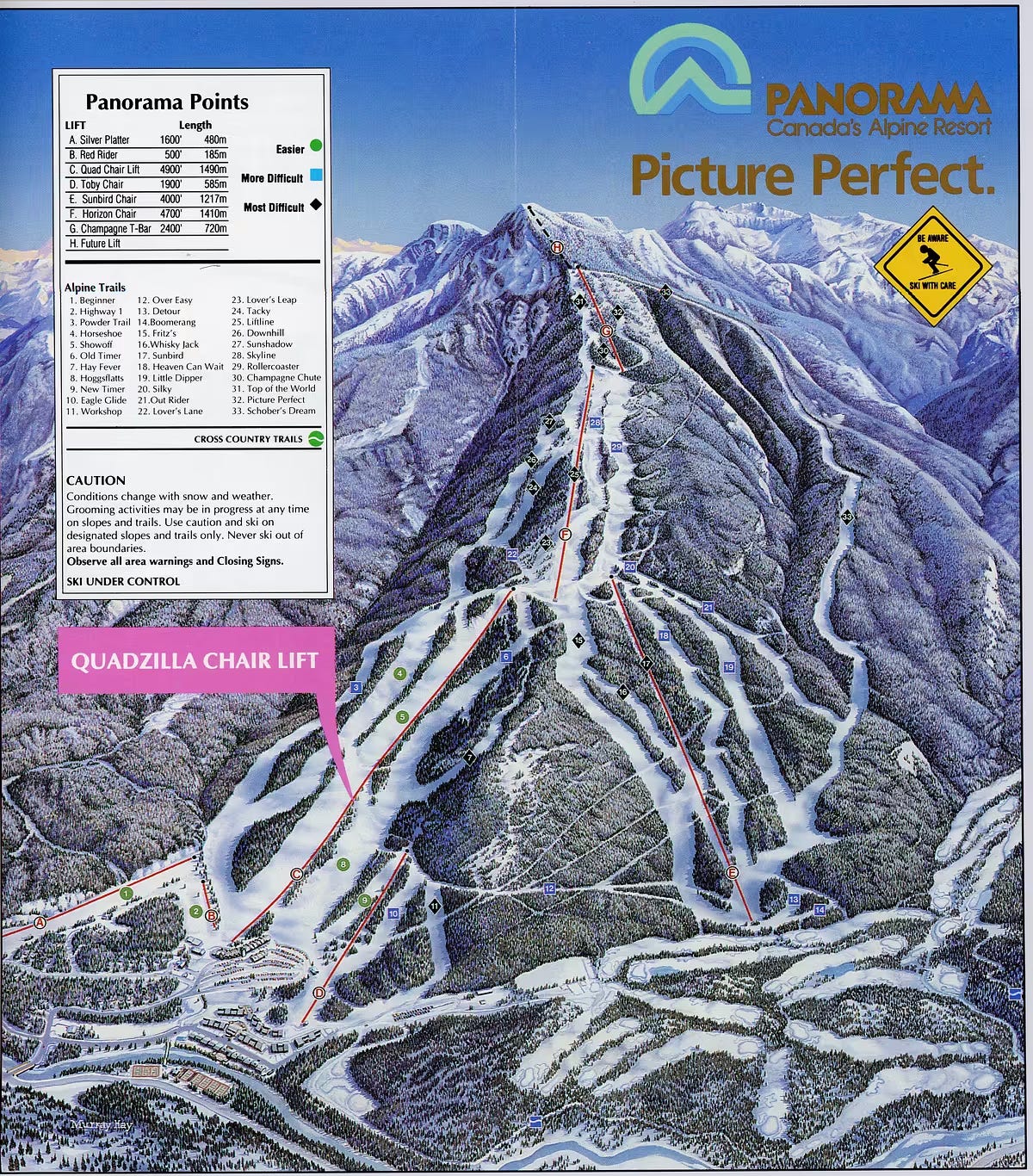
By 1995, just two years after Intrawest had purchased the ski area, the company had installed a summit T-bar and opened huge tracts of advanced terrain off the top of the mountain:
The summit T ended up being a temporary solution. By 2005, Intrawest had thoroughly modernized the lift system, with a sequence of high-speed quads out of the base transporting skiers to the fixed-grip Summit Quad. Taynton Bowl became part of the marked and managed terrain:
On Whitebark Pine certification
A bit of background on Panorama’s certification as a “whitebark pine-friendly ski resort” – from East Kootenay News Online Weekly:
The Whitebark Pine Ecosystem Foundation of Canada has certified Panorama Mountain Resort as a Whitebark Pine Friendly Ski Area, the first resort in Canada to receive this designation.
The certification recognizes the resort’s long and continued efforts to support the recovery of whitebark pine within its ski area boundary, a threatened tree species that plays a critical role in the biodiversity of mountain ecosystems. ,,,
Found across the subalpine of interior B.C., Alberta and parts of the U.S, this slow growing, five needle pine is an integral part of an ecosystem that many other species depend on for survival. The tree’s cones hold some of the most nutritious seeds in the mountains and sustain Grizzly bears and birds, including the Clark’s nutcracker which has a unique symbiotic relationship with the tree. The deep and widespread roots of the whitebark pine contribute to the health of watersheds by stabilizing alpine slopes and regulating snowpack run-off.
Over the past decade, whitebark pine numbers have fallen dramatically due in large part to a non-native fungal disease known as white pine blister rust that has been infecting and killing the trees at an alarming rate. Since 2012, the whitebark pine has been listed as endangered under the Government of Canada’s Species at Risk Act (SARA), and was recently added to the U.S Fish and Wildlife Service’s threatened species list.
Panorama Mountain Resort has collaborated with the Whitebark Pine Ecosystem Foundation of Canada to facilitate restoration projects including cone collection and tree plantings within the resort’s ski area.
The Storm publishes year-round, and guarantees 100 articles per year. This is article 31/100 in 2024, and number 531 since launching on Oct. 13, 2019.




